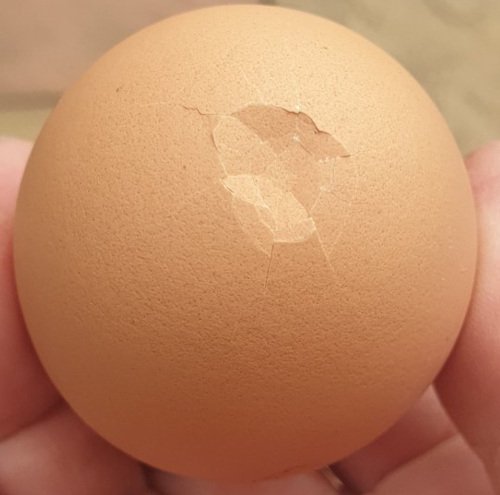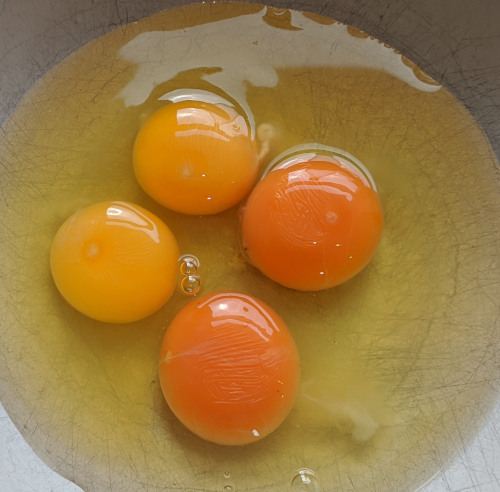What is the life of a battery hen like?
I can’t say that was delighted when back in 2012 that the UK enacted the European legislation to ban these conventional battery cages and replaces the minimum standard with the Enriched Colony Cage.
The life of a battery or caged hen is pretty awful. They are kept in stacked cages, sometimes as many as 6 high with no real space and no access to the outside at all. Food is delivered by conveyor belt and water from drinkers in the cage walls. The floor is mesh and the sides solid.
They spent 70 to 80 weeks under artificial light laying eggs all the time and then they are disposed of.
I was however, glad to read that the sale of free range eggs has grown by 16% in 10 years so we are on the right track.
Below: Battery hens in a cage.
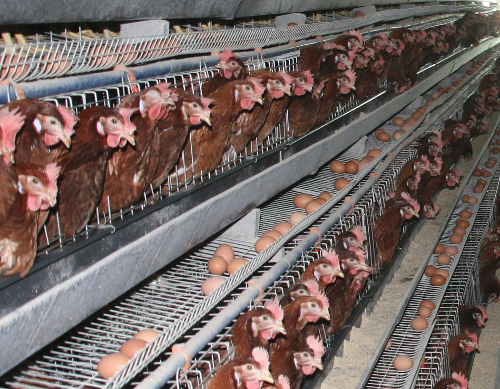
Usually, hens that reach 16 weeks of age are moved from initial housing into the battery cages. Battery cages are most often constructed in long, connecting lines up to 6 rows high.
Mortality rates are high at all stages of production and around 4% of birds never start laying.
Giving Ex battery chickens a new home:
So you have been horrified by the media and charity reports about the life of a laying hen in a battery farm and have decided you want to rescue a few. By giving some ex-battery hens a new home you can give them a chance to have some quality of life after their ordeal.
Apart from the welfare issues, you also have the opportunity to get some delicious free range eggs in the process, as well as doing your bit to help these innocent victims of the intensive farming system.
A list of re-homing charities is shown later in this article. They are widespread across the UK so chances are you won’t be far from one.
Ex battery chickens have a few extra requirements and need a bit of tender loving care.
You can’t just pick up ex –battery hens at a pet shop.
These birds are the epitome of intensive farming in general as well as raising funds to enable them to help more of the 16 million battery hens in the UK each year.
Only a fraction of these hens are currently re-homed and the battery hen charities are crying out for more loving homes to provide these girls with the free range life they deserve.
There are 2 ways to get your Ex-battery chickens, through the registered charities like the British Hen Welfare Trust or direct from the farmer.
I bought my last batch for £1 each straight from the farm but had to take 50. This method may be cheaper but takes extra work on your part and any money you pay goes to the farmer and you generally need to buy quite a few.
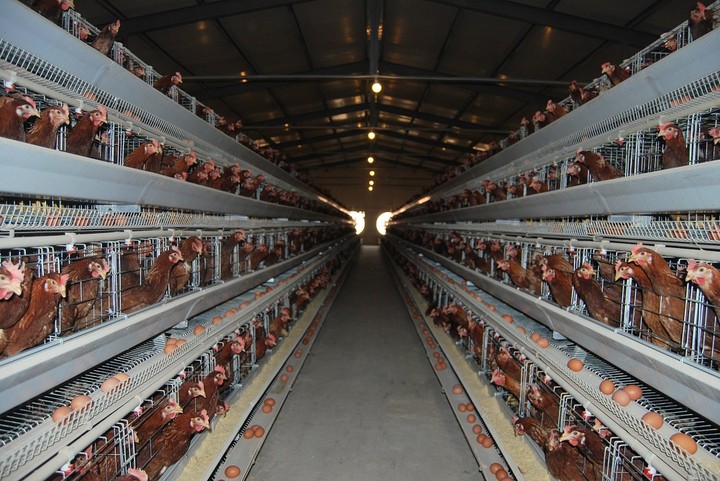
Image above - rows and rows of hens in battery cages
I would recommend getting your ex-battery hens through a registered charity. They charity does all the work and gets your donation and any money you donate to charities however, will be invested into the future of rescuing ex-batts, promoting their terrible plight and campaigning for improved conditions for all hens.
Plus you will be assured of a healthy hen who has been checked by a vet, who has had her claws trimmed and have the added reassurance of help lines and support should you need any advice.
The charities will ask for a donation for the chickens. This covers the vets bills on re-homing day, the money they pay to the farmer, transport, etc. and generally is somewhere between £2 and £5 per hen. Larger charities like the BHWT take donations on re-homing day but some smaller charities do ask for it up front when you register, to avoid losing precious funds from “no shows/ non payers”.
Before you contact the charities and register your interest to buy ex battery hens there are a few things to consider first. Like all pets, chickens are a commitment and it is your duty to ensure their health, happiness and safety.
Below: A hybrid rescued from a cage now fully feathered and healthy.

My Ex-batts are now sleek and happy in 4 acres of north Yorkshire Countryside. I have had several dozen over the years as well as collected 70 or so from people who found them difficult to look after.
Reasons to not rescue ex-battery hens?
First and foremost you need to take into account is that your hens are at least 96 weeks old when you get them, it was put in a cage at 16 weeks old and has been kept in warm extended light conditions for an 80 week laying cycle.
They have never had the opportunity to be a real chicken and as many as 1 in 5 die during the transition.
Bear in mind these are commercially ‘spent’ hens and expect them to have been starved during their demob. They also have a tendency to die relatively young and newly freed ex-batts have a dreadful smell, bless them, and so open a window a bit.
A few dust baths and some freedom will soon see them right. Remember that the chickens you have just got have never had any fresh air or seen the sun.
So you want to help a few - but -
1- Do you have the space: - Do you have enough space for chickens, they don’t require much room, a small back garden will easily be enough for 3 chickens.
2- Number: How many chickens do you want? Charities state you must re-home a minimum of 3 chickens as hens are flock creatures and need company. 3 or 4 chickens fit comfortably into a standard coop and provide a ‘standard’ family with more than enough eggs.
3- Costs: Unless you are lucky enough to inherit a coop and equipment, you will need to buy one. As always get the best you can afford as it will be built better, be more secure and last longer. A brief internet search showed you can buy a small coop/run for as little as £100 and maybe less if you can get one secondhand.
Don’t forget the buying of feeders and drinkers, which are a few pounds each. Bedding is cheaper bought in bales. 3 hens will cost you around £100 to £120 a year to feed and house.
4 - Time: Chickens don’t take up much time, much less than a dog who needs regular walking. Chickens walk themselves. However, they do need letting out in the morning, which is OK at 8am in the winter, not so good at 5.30am in the summer. They also need locking up before dusk, which can be 4pm in the winter.
Will they be in a secure run and safe from predators? Their coops need de-pooing each morning and cleaning out properly once a week. Plus you need to keep food and water topped up daily.
You could spend as little as 15 minutes a day caring for your chickens although personally I can happily spend hours! And then an hour once a week to thoroughly clean the coop, feeders etc.
5 - What if they get ill? Battery hens are routinely vaccinated as day old chicks against most of the serious poultry diseases that they could get and they won’t be carrying worms since they cannot pick up the worm eggs in dirty litter having lived on a wire floor. Ex-Batts are not unhealthy merely unfit. They can however be prone to certain ex-batt specific ailments.
Below: Ex batts. Want to help one of these poor tatty batty's
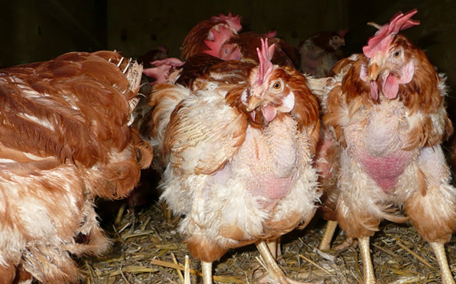
Battery hen re-homing charities:
British Hen Welfare Trust - The largest hen rescue charity in the UK, having re-homed just over 250,000 hens in the 6 years since its inception. A group of 25 regional coordinators organise the rescuing and re-homing. Donations of £3-£4 per hen are requested.
Cambridge Little Hen Rescue - A minimum donation of £3 per hen.
Lincs Little Hen Rescue - Covering Lincolnshire, West Norfolk, Cambridgeshire and the East Midlands. A minimum donation of £3 per hen.
Free at Last - Not for profit organisation based in Bedfordshire. Donations of £1.50 per hen are requested.
Little Feathers Hen Rescue (Scotland) - Based in Fife in central Scotland.
RSPCA - Some RSPCA branches.
Fresh Start for Hens - (Hen Re-homers) Nationwide organisation with regional coordinators. Previously known as North London Rescue. Donations asked from £2.50 per hen.
Little Hen Rescue - Small hen re-homing charity based in Norfolk.
Common health problems of ex battery hens:
Considering what they have been through, ex-battery hens don’t usually have too many health problems and with a little extra tender loving care than will make the adjustment to their new life quite easily.
You will probably have an image of tatty, haggard and barely feathered ‘oven ready’ birds as we see in the media, but in fact many Ex-Bats do still have feathers, the camera looks for the worst ones to take pictures off.
Feathers do regrow within 2 to 3 months though – so don’t let a bald bird put you off re-homing the hens. Some say the bald hens are the better layers because they are putting all of their energy into egg production.
This makes sense when you consider that hens normally stop laying when they moult (lose feathers) and regrow them again. Feathers are 80% protein after all and guess what most of your egg is made up of, yes you got it – protein.
When you first get your ex battery hens, there are a number of minor health problems that you may have to deal with. As your hens recover, there can be a small number of ongoing problems. There may be some losses in your flock but if you read through this article, hopefully, you will be well equipped to spot some of the common health problems sooner rather than later.
Below: all of mine grew new feathers within 90 days and are now sleek and healthy.
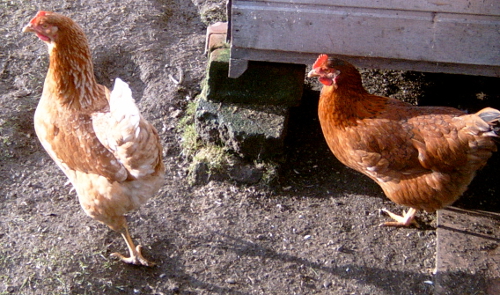
Stress - Chickens are creatures of habit and are nervous to change. Stress is a problem for chickens and can cause them to stop laying at best and turn them into feather pulling bullies. Battery cages are said to increase stress and aggression levels in the birds.
Removing them from this environment, the only environment that they know can be even more stressful for them, even though to us, it seems that what we are doing for them is good.
Remember the birds you take home will probably not have been in the same cage together so they will need to get used to one another and establish themselves as a flock again. Do not force your birds out of their house or run. It is best to let them find their feet gradually, starting off with the inside of the hen-house.
Osteoporosis - Keeping battery hens in cramped and barren conditions isn’t without a serious cost to their health. Highly productive hens have a high demand for calcium in order to produce strong egg shells and combined with a lack of exercise, this can lead to a painful condition known as cage layer’s osteoporosis which increases the chance of breaking bones.
Care must be taken when handling Ex-Bats hold them securely and do not let them flap uncontrollably. They should not be given high perches initially until they have had some months to recover with proper exercise and increase calcium levels.
Most ex-battery hens are very tame and easy to catch and will not run off but if they are out of reach, it is important not to catch them by holding a leg because it is surprisingly easy to dislocate or break a leg.
Overgrown Beak or clipped beak problems - A chicken’s beak will grow, just like the nails on our own hands and battery hens have usually been debeaked so may have very mismatched beaks. Chickens that can free range will usually wear their beak down as it grows naturally but battery hens don’t have an opportunity to do this.
Below: You might think it odd that chickens that have been debeaked can have beak issues.
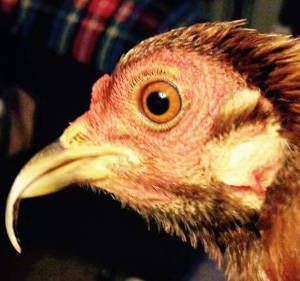
Charities that re-home battery hens will usually trim their claws or beaks before you get them but if they don’t have time to do this for you then you will need to do this yourself. You will need a pair of dog nail clippers to do this. Trim a sliver off at a time and do not overdo it, taking care not to cut through the ‘quick’ a blood vessel that runs down the beak or slip and injure the bird or yourself.
No Eggs / Stopped Laying - Hens living free range in the UK without additional lighting over the dark winter months will moult and stop laying over the shortest days of winter, starting again when daylight hours increase in the spring.
This is perfectly natural and wild birds only lay in the spring. Battery hens have been bred specifically for producing large numbers of eggs so they will usually come into lay before pure breeds of poultry under natural conditions, however, like all chickens they will not normally lay during a moult.
Chickens moult to replace their feathers usually once per year but battery hens have been kept under constant ‘mid-summer’ lighting conditions to keep them laying. Once removed from their cages, they will take a little while to moult and regrow their feathers, they will probably stop laying whilst they replace their feathers. They may have also been starved, birds destined for slaughter usually are and farmers won’t pay for feed if they do not need to.
Strange Egg Shells - Sometimes eggs can be soft, thin shelled or wrinkled. Eggs that are laid without a shell, are held just inside the membrane which is soft. This usually happens when hens are at the start or end of a laying cycle. Just about every strange egg condition is described in the Egg Problems section.
Overgrown Nails, damaged or injured feet: A chicken’s nails will grow, just like other animals and the nails on our own hands and may get damaged or ripped on cages in the battery farm. Free range chickens don’t usually need their nails cutting because they are continually wearing their nails down in their environment but battery hens cannot do this living in a cage.
Nails can be trimmed with a pair of dog nail clippers. Trim a little off at a time, taking care not to cut through the blood vessel that runs inside the nail. If you cut the blood vessel, it is hard to stop the bleeding. A styptic pencil can be used to stop this. Styptics are a specific type of anti-hemorrhagic agent that work by contracting tissue to seal injured blood vessels.
Crop and digestive issues: You will be feeding them a different feed from the commercial powder they ate in the barns. and they will have access to greenery which can cause crop issues as they will have physically weak digestive systems.
Tips for re-homing your ex battery hens:
Whilst ex-battery hens are just as easy to care for as any other chickens, these very special ladies do require some special consideration and treatment after the ordeal they have been through. Remember that whilst it is a big day for you, it is an even bigger one for your girls. Up until that day, their lives will have consisted of a cramped wire cage with no natural sunlight or fresh air. Absolutely everything they encounter from now on will be new and scary and the birds will easily panic and flap about.
This is a list of tips for getting your hens safely home and looking after them till they settle in:
1. Use well lined sturdy boxes with air holes or cat boxes or similar to transport your new hens. I line mine with straw.
2. Newly freed rescue hens do not know where home is and will have no fear and will wander off and hide in corners or under bushes so they need to stay in their coop and run until their home is imprinted on them, this generally takes 3 or 4 full days and they will need to be monitored when you let them free. They will naturally establish a pecking order but this can seem quite a brutal process and human intervention can sometimes prolong it. There are a few things though that you can do to help it along: Pop them all in the coop together when they are asleep, so that they wake up together.
3. They have no knowledge of night and day having been exposed to 18 hours artificial light so will need encouragement to go into their coop at dusk. They have also never roosted so will need to be taught. This is just simply lifting them after dark till they grip the perch and settle. Hens naturally want to perch and a few days on good food and a few practice runs will soon see them happily roosting at night.
4. Their legs will be very weak from lack of use so try to make the ramp less steep by making it longer. Use another piece of wood or even prop it on a sturdy stone if it appears too steep. Or physically put them in the coop each night until they are steadier on their legs. They will recover quite quickly.
5 Your girls will have come from a temperature controlled environment so will need to be kept warm or cool as necessary. Make sure the coop is draught free and bedding is extra soft, as sore pecked skin needs extra care.
6. Cover part of the run so they have shelter from the sun and rain. They will obviously be unaware of weather and will stand out in the rain, oblivious, at first if not protected. Also that naked skin is very delicate and will burn easily, so shade from the sun is just as important.
7. Food and water - don’t change their food abruptly. Use a commercial feed mash until they are strong, then change to pellets or introduce whole-grains and grit gradually. Smallholder Ex-batt range is recommended by the BHWT. It provides all the nutrients the birds need and more importantly it is similar to what they have been fed in the cage.
8. Patience – In a few weeks they will be normal happy chickens, just give them the time to make the adjustments themselves, be gentle with no quick moves and remember the best way to any chickens heart is through its stomach.
Your little chickens have had a hellish ride through life so far and the odds are that the less feathers they have, the more hellish that ride was. So introducing them all to each other will be quite a trauma for them.
Chickens are attracted by blood so you want to avoid that if at all possible. Make sure there are plenty of feeders and drinkers around so the dominant hen doesn’t hog them. Hand up some tasty greens for them to peck at.
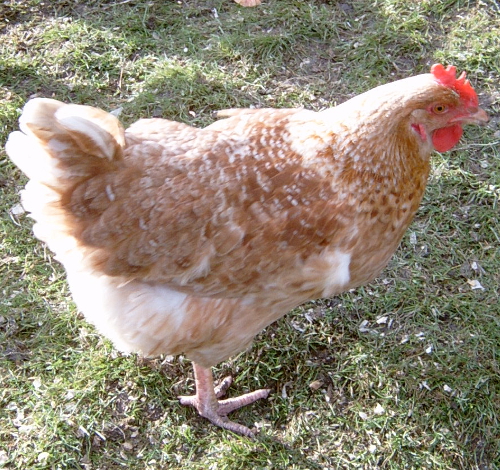
Image above: An ex battery hen after recovery, happy and free range.
Free ranging one of the reasons for re-homing ex-batts, to provide a happy retirement to some hard-working hens. The million dollar question is how far to let them roam.
Half of me wants them to be in the run and completely safe from predators, whilst the other half thinks they have spent long enough in a confined space, they need freedom to roam!
Ex-batts and other animals - Don’t be fooled by their frail stature, ex-batts are very capable of looking after themselves when faced with a family and some enjoy a game of ‘harass the cat’.
I would however, take much more time introducing a family dog to the chickens and never have him/her off lead in the garden until you are completely sure of their reactions. Include children in this section as well, they need some time to adjust to the hens as well.
Contrary to appearance, ex-batts are not unhealthy, they are merely unfit. They have had the full quota of vaccinations whilst in the battery farm and have been checked over by a vet on rescue day. However, standing in a wire cage 24/7 means their legs are weak and they are unused to exercise, so introduce it gradually.
Re-homing a few ex battery hens is an incredibly rewarding experience. Battery hens have never been able to express some of their most natural behaviours; like foraging, scratching the ground or nesting to lay their eggs and seeing them able to do this for the first time is certainly very satisfying.
After a few months, these poor, scruffy looking hens that you’ve re-homed will have re-feathered and be on the lookout for worms in your back yard and getting a few fresh eggs along the way.



